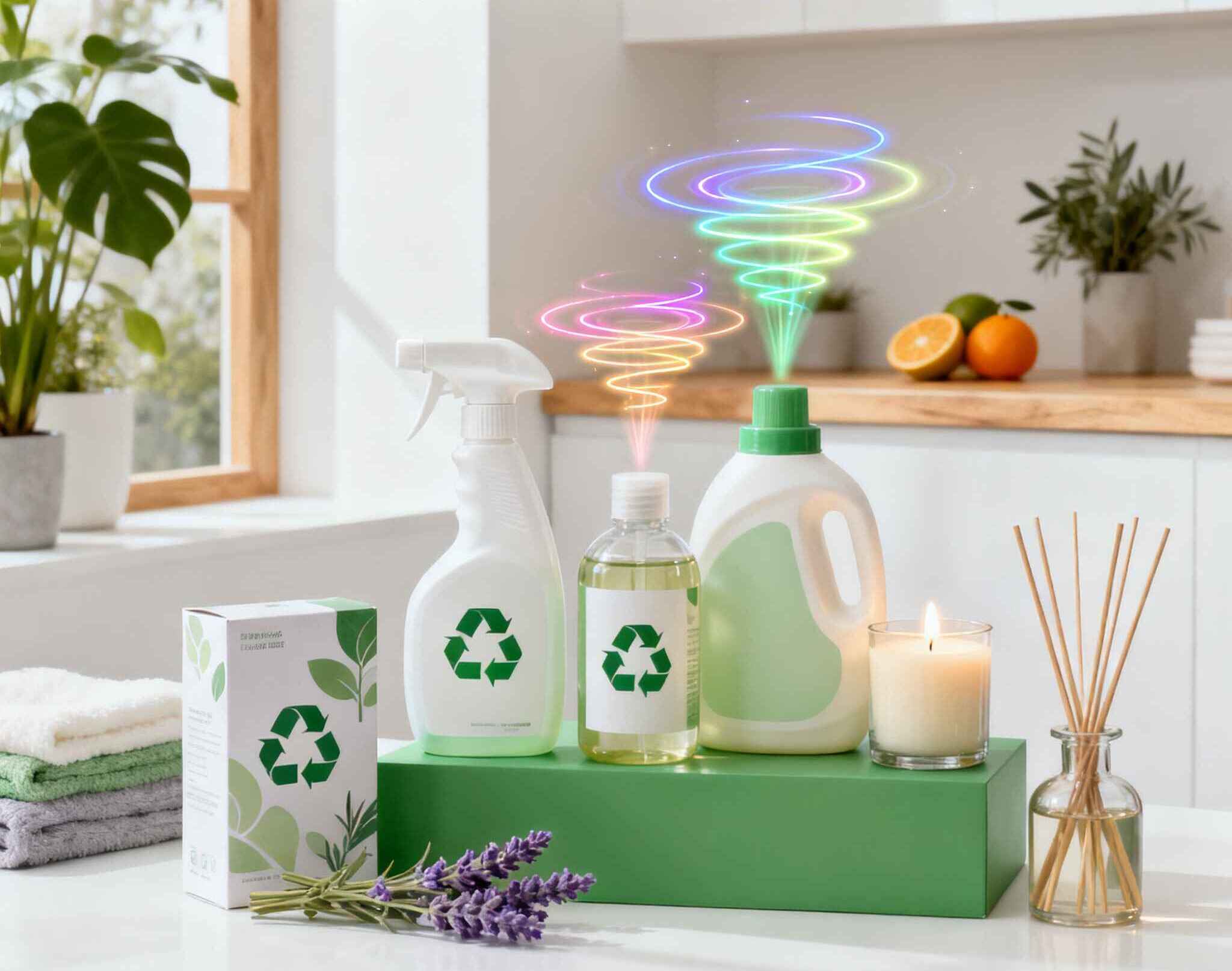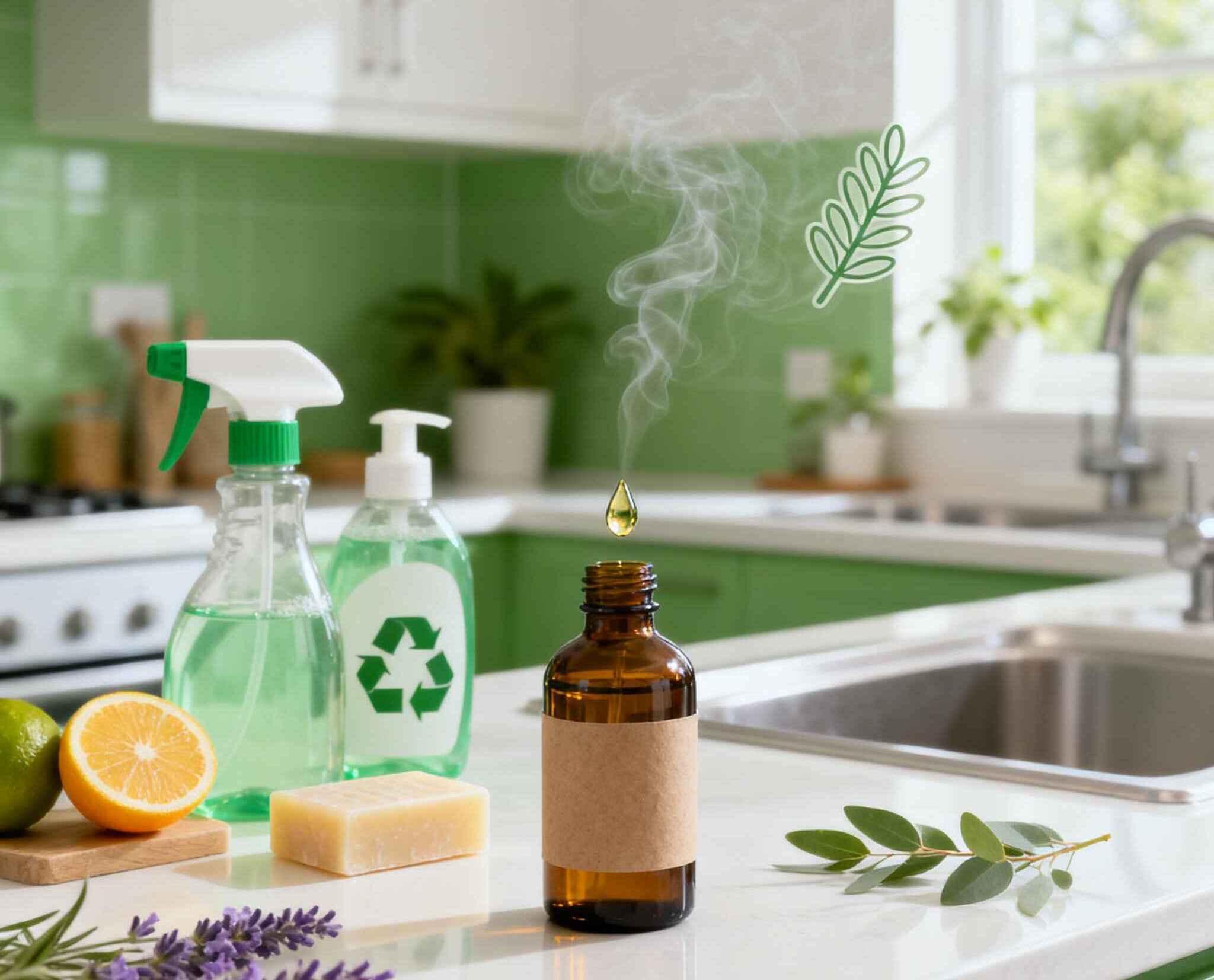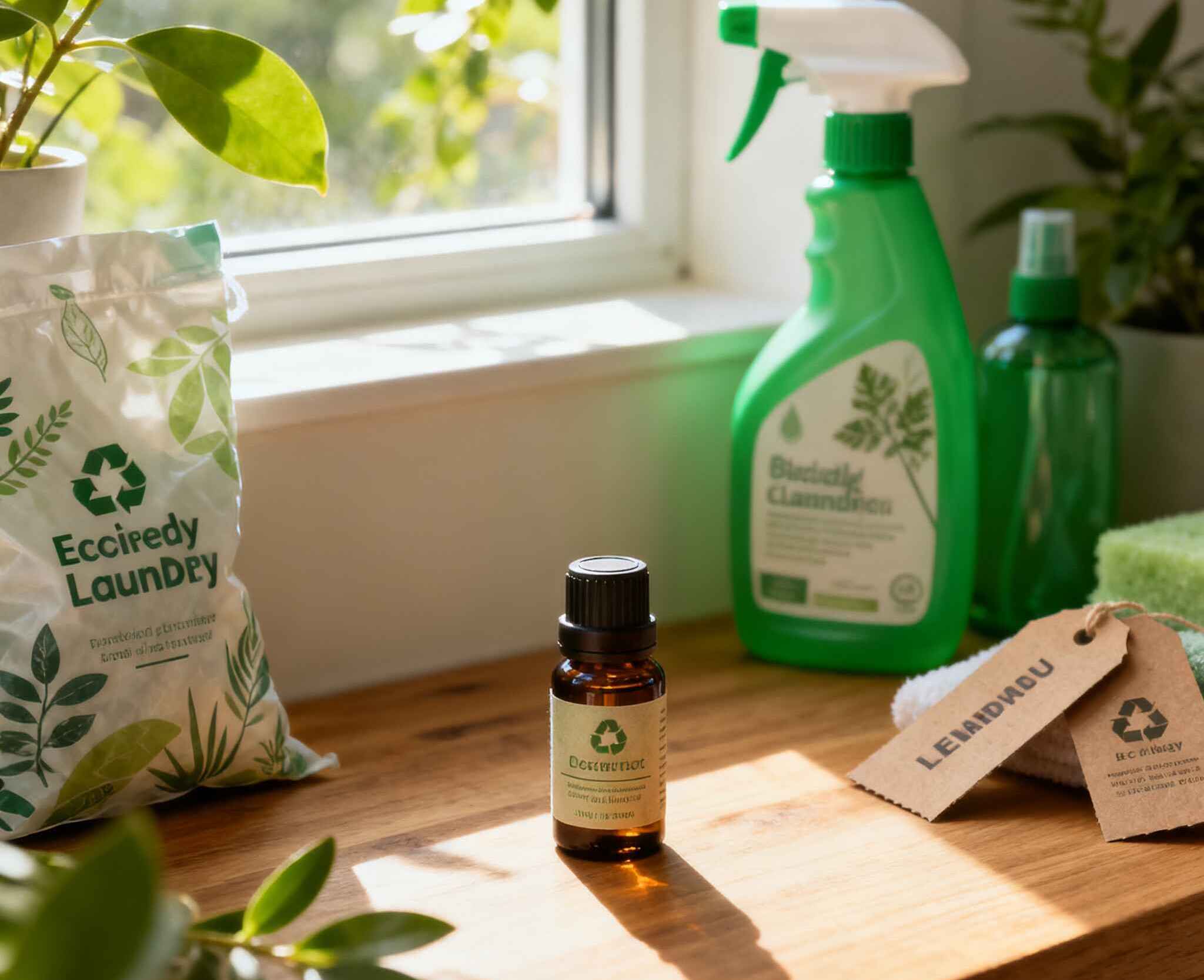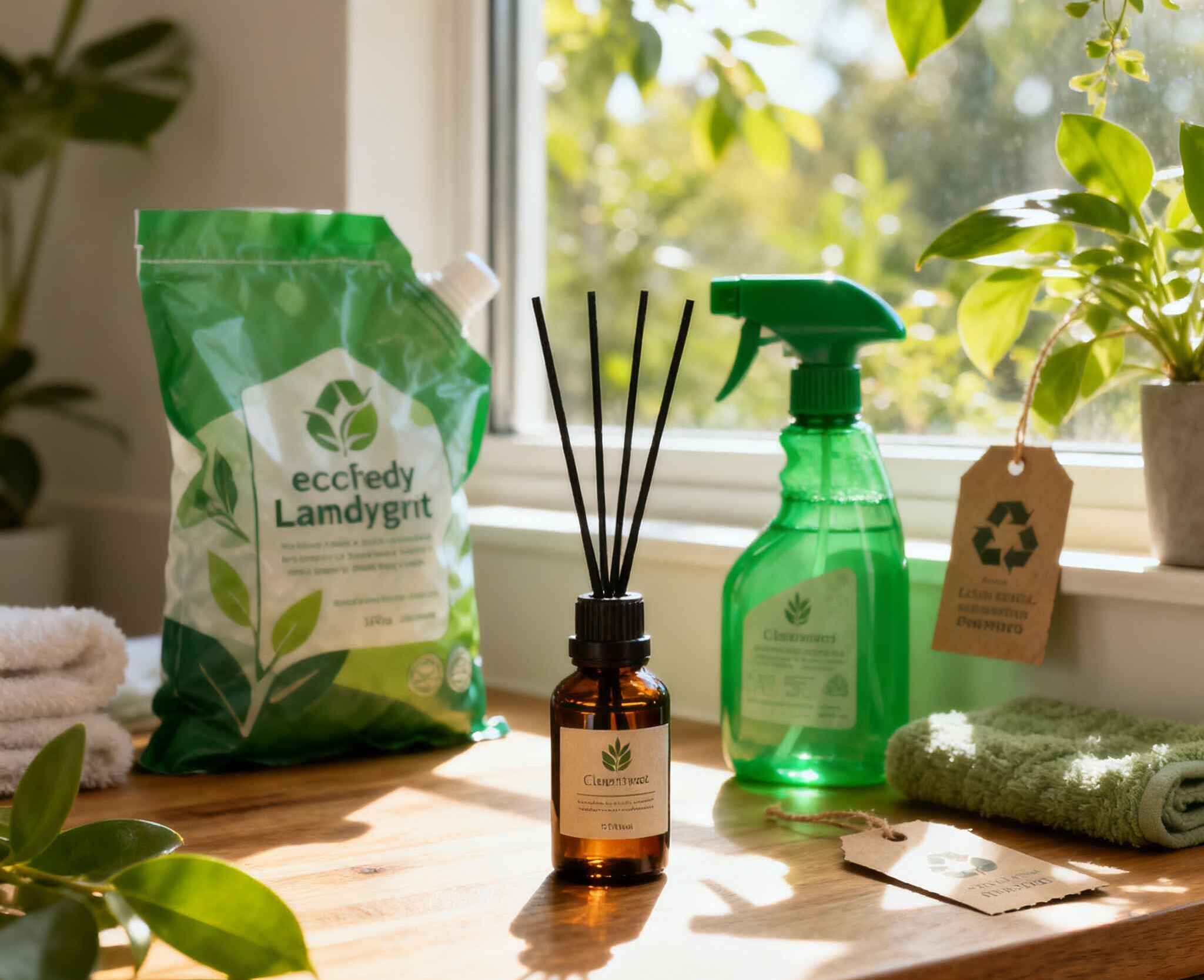



You want cleaners that work, smell good, and don’t punch the planet. Sounds simple; it isn’t. The good news: with smart fragrance oils, you can hit cleanliness, compliance, and consumer love—without bloating carbon or indoor air loads. Let’s keep it practical, data-lean, and brand-ready.
If you claim “eco-friendly,” start here. EPA Safer Choice bans CMR and PBT substances and screens for respiratory sensitizers. In plain words: your aroma system must clear a hard gate before it enters the bottle.
What this means for home care:
Quick checklist you can steal:
Want a compliant library to start from? Try tailoring from our Home Care Fragrance base sets and dial in from there.

IFRA gives you dose windows by product category (spray vs. rinse-off vs. softener). That “window” is your ceiling.
Use it like a pro:
Why it matters: Less fragrance mass for the same sensory hit means lower VOC pressure and easier LCA wins.
If rinse-off products contain listed fragrance allergens at or above 0.01%, you disclose them on label. That’s consumer trust and legal hygiene in one line.
Label moves that help:
Pro tip: Educate customer service scripts to read allergen lines clearly. It cuts returns and tickets.
California’s rules shape US formulations. VOC limits apply by product type. LVP-VOC carriers (low vapor-pressure glycols, etc.) often don’t count toward VOC totals, which is why you see DPG and friends in laundry bases.
Don’t overdo it:
House rule: Always test in final base at use-level, not in water. Sounds obvious; gets missed, a lot.
If you rely on microencapsulated fragrance for long-lasting softness, you must check the new EU microplastics restriction. Traditional polymer shells are under pressure; brands are shifting to readily biodegradable systems or alternative release tech.
Action items:

Research shows scented products can emit many VOC species indoors. That doesn’t mean “no fragrance ever.” It means smarter chemistry plus lower load.
How to lower the indoor burden:
Not all molecules carry the same footprint. LCA tools help you pick lower-impact routes and still land the same emotional payoff in laundry day.
Make LCA work for scent:
Let’s ground this in reality—two bread-and-butter categories.
You want: lift “clean” perception, help with malodor masking, play nice with surfactants, and not blow up VOC caps.
Try a custom route? See our Detergent Fragrance Manufacturer page for high-impact, low-load blends.
You want: rinse-resistant freshness, fabric-friendly deposition, and compliance with encapsulation rules.
Explore long-lasting palettes on our Fabric Softener Fragrance Supplier page—made for softeners’ cationic bases.
| Regulatory / Standard | Core Requirement | What You Actually Do in Formulation | Practical Outcome |
|---|---|---|---|
| EPA Safer Choice Fragrance Criteria | No CMR/PBT; screen sensitizers | Select from a pre-vetted palette; document CAS and hazards | Cleaner label claims; fewer red flags |
| IFRA Standards (Category Limits) | Category-specific max use level | Set a “dose window” by SKU; confirm via IFRA Certificate | Same scent impact at lower total load |
| EU Detergents Reg. 648/2004 (Allergen Labelling) | Disclose listed allergens ≥0.01% in rinse-off | Track allergen totals; add antioxidant to reduce oxidation | Trustworthy labels; fewer complaints |
| CARB VOC & LVP-VOC | VOC caps; LVP-VOC exemption | Use low-vol carriers wisely; test in final base | Pass caps without killing top notes |
| EU 2023/2055 Microplastics Restriction | Limits on intentionally added microplastics | Switch to biodegradable shells or non-capsule tech | Fresher claims that survive audits |
| Topic | Useful Fact | Why It Matters |
|---|---|---|
| Allergen disclosure | Rinse-off products label listed allergens when they exceed 0.01% | Sets your formulation guardrails and label copy |
| Volatility strategy | Less high-vol top notes in leave-behind formats | Keeps indoor VOCs and “over-perfumed” feedback down |
| LVP-VOC | Low vapor-pressure carriers often don’t count toward VOC totals | Lets you balance performance with compliance |
| Oxidation risk | Limonene/linalool oxidize; risk rises with heat/light | Add antioxidant, use opaque packs, rotate stock |
(Numbers and thresholds vary by jurisdiction—always check current texts before print. Dont skip this.)
You don’t need a louder scent; you need a smarter one.

Lab success dies in the plant if you ignore the base.
Scenario A — Liquid Detergent wants “fresher after 4 weeks”:
Cut load by 10–20% by swapping a heavy fixative with a brighter high-impact aldehydic pair. Add tiny malodor counteractant. Same panel score, lighter VOC burden, lower cost-to-serve. Kinda simple, but you’d be surprised.
Scenario B — Fabric Softener chasing capsule-like longevity without capsules:
Build a musk-amber tail on a soft floral heart, lean on fiber-affine fixatives, validate on cotton/poly blends. You get day-two freshness without polymer shells.
Scenario C — Multi-region roll-out:
One core accord, micro-tuned to meet CARB VOC in the US and allergen disclosure in the EU. Labels sorted; operations happy.
For fast prototyping, browse our Home Care Fragrance families, then brief the tweak. Or just ping us from the I’Sc ent homepage (yes, we’re quick).
Explore category starters and custom briefs here:
| Use Case | Goal | Dosage Window (IFRA-aware) | Tactics | Risk Control |
|---|---|---|---|---|
| Liquid Detergent | Perceived “clean” at wash; low residue | Low-to-moderate | Aldehydic lift + malodor counteractants; lean fixatives | Surfactant haze, enzyme interaction |
| Powder Detergent | Freshness post-wash; stability in dry mix | Moderate | Encapsulation-free fixatives; protect top notes via processing | Volatile loss, dusting |
| Fabric Softener | Long-lasting softness & comfort trail | Low load, long tail | Fiber-affine fixatives; biodegradable capsule alt. | Microplastics rules, over-sillage |
| Surface Cleaner | Clean perception without heavy perfume | Very low | Bright top with fast fade; solvent-compatible | Indoor VOC spikes, streaking |
Then iterate fast. Our Detergent and Fabric Softener tracks are built exactly for this kind of sprint.